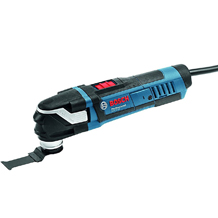Detail sander purchasing advice: how to choose the right product
- What you need to know
- Detail sanders are small sanders with a triangular sanding plate. They belong to the category of orbital sanders and are suitable for small to medium-sized surfaces.
- The device allows users to shape and smooth hard-to-reach areas, corners, and curves.
- Detail sanders work with an electronic motor. Either a mains cable or an integrated rechargeable battery is responsible for the power supply.
- The greater the number of vibrations, the higher the material removal rate. With an adjustable oscillation rate, hard and soft materials can be sanded optimally.
- Many detail sanders suck the resulting sanding dust into a connected dust container or through a vacuum hose.
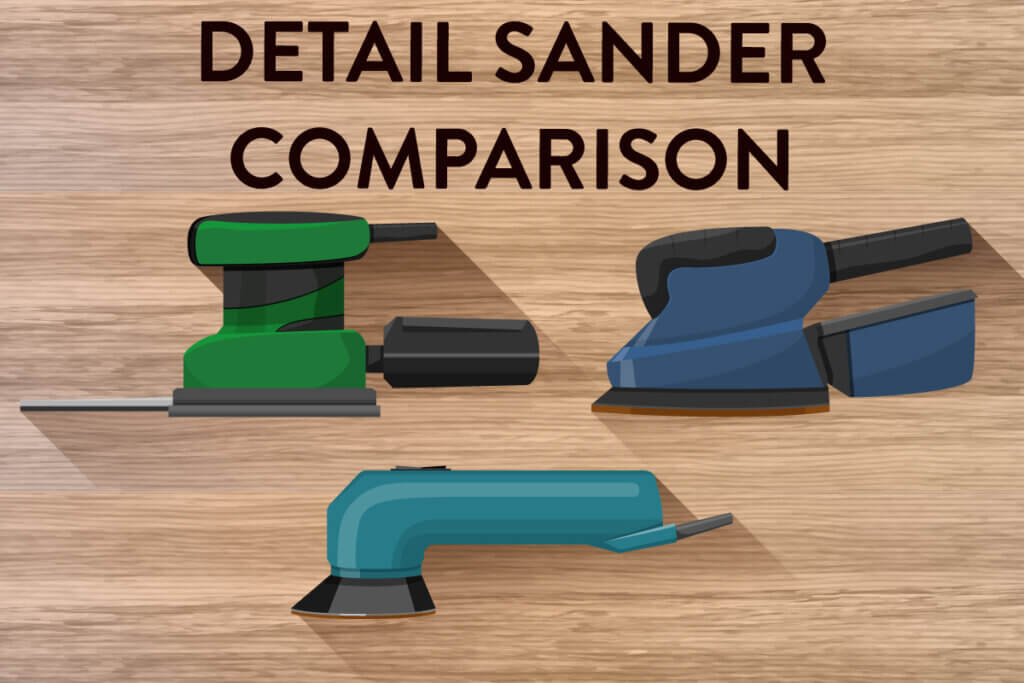
For every hard-to-reach corner
Building large pieces of furniture and other workpieces is a time-consuming job consisting of many small steps: the material is rough, and it has corners and edges that would interfere with the finished workpiece. It, therefore, has to be shaped and sanded. For this task, craftsmen as well as hobbyists can choose from a large number of different sanding tools in various sizes and shapes. A classic orbital sander is suitable for large surfaces.
If you want to work on hard-to-reach areas on a small or medium-sized workpiece, you should use a detail sander. This electric device can easily reach even tiny gaps. It’s also called a ‘delta sander’ from the Greek letter ‘Delta’, which has the shape of an isosceles triangle and thus describes the appearance of the sanding plate.
Construction and mode of operation
Detail sanders are similar to larger orbital sanders in terms of how they work, but thanks to their smaller dimensions they can be operated with one hand. The bar-shaped housing has a narrow handle. A sanding shoe is attached to the front at a 90-degree angle. The triangular sanding plate has edges that are curved outwards. It is equipped with sandpaper that can be easily attached and replaced with a hook-and-loop fastener. Depending on the grit of the paper, the sander provides fine or rougher results. The plate can usually be rotated 120 degrees and is perforated.
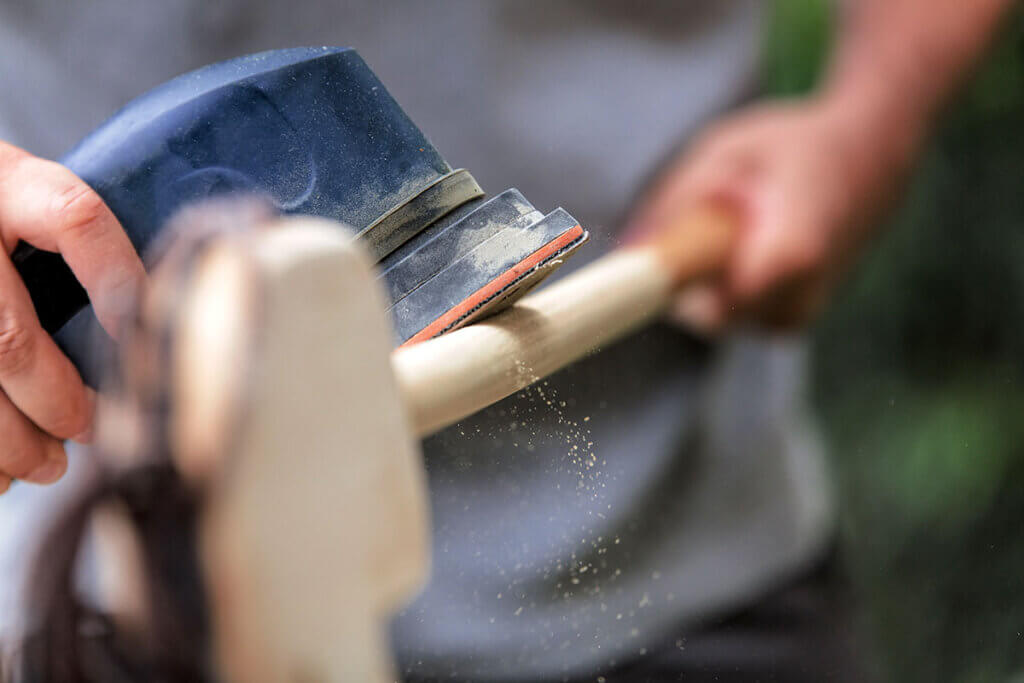
The holes are part of the extraction function: the dust produced during sanding passes through them directly into a vacuum cleaner or dust bag. For this purpose, there is either an adapter for a vacuum hose or a small dust container at the rear end of the housing.
The unit is driven by an electric motor inside the housing, which is powered by a mains cable at the rear end or by a rechargeable battery. Switching on the device sets the sanding surface into an oscillating motion. With some models, the number of oscillations can be adjusted.
Possible applications
Delta sanders are mainly used for woodwork and restoration. They are used, for example, to refurbish old furniture, remove paint and varnish, or put the finishing touches on stairs, windows, and doors. They can also be used to sand the corners of parquet floors, mouldings, and ornaments.
Hobbyists can use the delta sander to sand wooden figures, decorations, or other workpieces. In model making, too, for example when designing landscapes, the shapes can be precisely finished with a delta sander. Powerful delta sanders with adjustable oscillation rates are also able to work on objects made of metal, plastic or glass with the right sandpaper.
Difference to other sanders
Which sander is the right one depends on the size of the workpiece and the area to be sanded. Detail sanders are just one of many different sanders. They belong to the category of orbital sanders, although classic orbital sanders are larger. In addition, large orbital sanders usually have a rectangular sanding surface and are more suitable for larger surfaces. They can also easily handle corners and curves.
So-called multi-sanders can be classified between classic orbital sanders and detail sanders. They are similar in size to orbital sanders, but have a triangular sanding plate. Like detail sanders, multi-sanders reach difficult spots, but are also used on larger surfaces. Orbital sanders are usually more effective on large surfaces.
Random orbital sanders are another type of sander. Their round sanding discs are suitable for sanding and polishing rough and curved surfaces. Random orbital sanders are used for medium-sized to large workpieces. In contrast to orbital and detail sanders, the sanding plate not only oscillates but also rotates around its own axis.

There are also belt sanders and angle grinders. Belt sanders are suitable for large to very large surfaces thanks to their endless running sanding belt. They remove a lot of sanding dust. They can also be used for cutting materials.
Angle grinders have different discs and attachments: depending on what is attached to the device, it is suitable for cutting, grinding, as well as roughing work.
What to look for when buying
The right detail sander can be found on the basis of various criteria, such as the performance when sanding different materials, the handling, as well as the quality and the treatment of the materials.
Oscillation rates and performance
The number of oscillations that a detail sander performs in one minute provides information about how well the device sands the materials. The higher the number of oscillations , the higher the material removal rate. Simple delta sanders only have a single vibration rate. They provide maximum power all the time. They are often sufficient for occasional use. However, if the device is to be used for different materials, a model is suitable that allows craftsmen and hobbyists to regulate the oscillation rates. This allows the power of the delta sander to be adjusted to the properties of the material.
Entry-level models have an oscillation rate of about 9000 to 11,000 oscillations per minute (OPM). In the medium price range, sanders can achieve up to 18,000 oscillations per minute. Professional detail sanders reach an oscillation rate of more than 24,000 oscillations per minute. For those who regularly carry out sanding work, a premium device with 20,000 to 24,000 oscillations per minute makes sense.
Corded or cordless
Most detail sanders are equipped with an electric motor. Only a few models, mainly for industrial application, have a motor with compressed air.
Power is supplied either by mains cable or rechargeable battery. Battery-powered delta sanders can be used anywhere: as they are not dependent on a power socket, they can also be used outdoors, for example in the garden. Typically, they work with a voltage of 18V and have a battery capacity of 2.0 to 3.0 ampere hours. However, the battery is quickly emptied during longer uses, which is why a replacement battery is indispensable.
With a corded delta sander, users are tied to a specific location, but the devices can also be used continuously. A model that is powered by a mains current also achieves a consistently high performance during long periods of use. To ensure that users have enough freedom of movement, a mains cable with a length of at least 10 feet (3m) is recommended. The power of corded delta sander is usually between 130 and 280W. Models with an output of up to 400W tend to be multi-sander models.
The rated power is mainly important for determining the electricity costs. In contrast to the number of oscillations, the power in watts provides little information about the material removal rate. Even a 190-watt unit can achieve 20,000 oscillations per minute.
Dimensions of the sanding plate
With detail sanders, the overall size is of little importance. More important is the size of the sanding plate. This determines how much material the tool removes and for which applications it is suitable. With a small sanding plate, craftsmen and hobbyists can get to narrow corners with ease. However, working on a larger workpiece takes longer than with a larger plate. A larger plate means that the diameter of the oscillating motion is also larger. Manufacturers such as Bosch usually state the value as ‘orbit diameter’. Another name is grinding stroke. Often a large diameter goes hand in hand with high power and thus favors material removal.
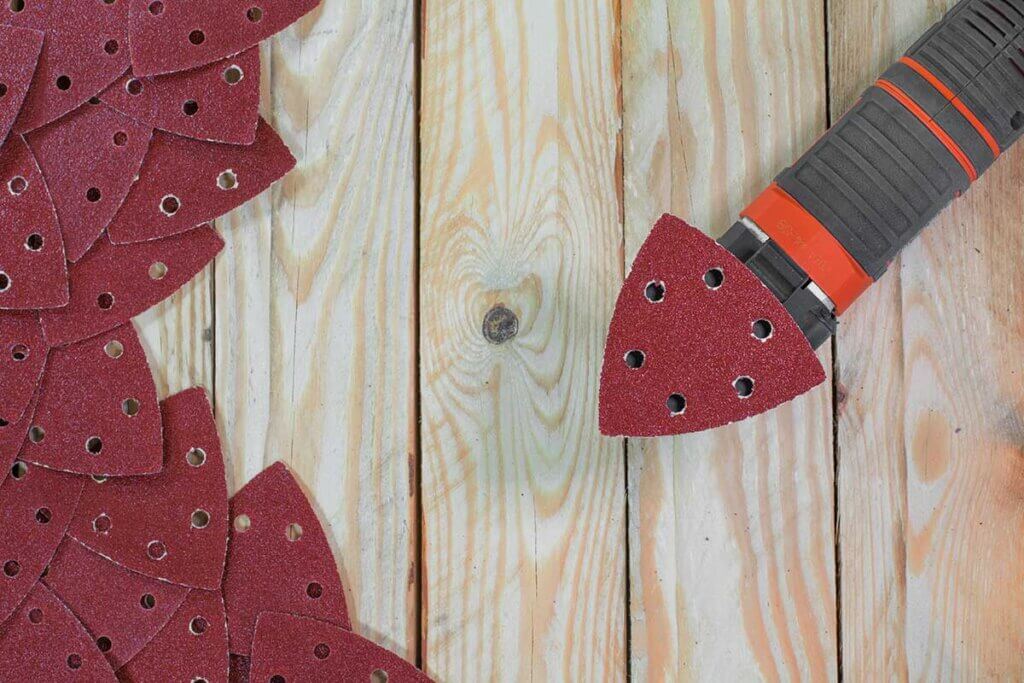
The typical width of a sanding plate is about 3.5 inches (90mm). On small models, each side is only between 2.3 and 2.6 inches (60 and 65mm). On multi-sanders, the width across is 5.9 inches (150mm). If the sanding plate of a detail sander has a width of around 305 inches (93mm), the grinding stroke is often 0.07 inches (1.8mm). A small sanding plate is fine for particularly narrow areas that require little power to work on. If you plan to work on larger areas, you will be more efficient with sanding plates that are at least 3.5 inches in size.
Material and workmanship
Regardless of the price range, detail sanders are made of plastic and metal. The models differ mainly in the quality of the material and its workmanship in the end product. The device should be robustly constructed and resistant against impacts. The more metal is used, the longer the service life. The durability of the detail sander also benefits from a dust-protected ball bearing that cannot suffer damage from the abrasion of the workpiece.
Handling
In order to be able to work with the delta sander for a long time, it is not only the material removal that is important, but also the ease of use. A switch that can be reached from both sides is advantageous so that right- and left-handers can work without problems. Thanks to soft and rubber handles, often called soft-grip, the tool lies securely in the hand. Vibration damping reduces the strain on hands and joints. In addition, non-slip, vibration-damping handles make it easy to guide the tool so that users can work faster and more precisely.
Heavy delta sanders often have a high motor power, but the weight quickly causes fatigue during prolonged use. However, some lightweight delta sanders have low sanding power, so it is advisable to carefully match the weight with the desired sanding power. The average delta sander weighs between 2.2 to 3.3 pounds (1.0 and 1.5kg).
Maximum comfort is particularly necessary for craftsmen and hobbyists who regularly use the delta sander for longer jobs. For occasional users, a simple and light model that is neither vibration-dampening nor particularly ergonomic is sometimes sufficient.
For safe working
Detail sanders may be small and less powerful than other power tools, but they also pose health hazards. The sanding dust can get into the eyes or lungs. Although a connected vacuum cleaner or dust container sucks up a large part of the abraded material, the vacuum does not reach particles that are swirling around. Safety goggles are therefore indispensable.
Especially if the suction function of the detail sander works poorly, a dust mask is useful. Hearing protection is not necessary for short operations, as the volume of detail sanders does not exceed the 85 decibels required by labor law. However, working with hearing protection is more pleasant in the long run.

Dust extraction for the benefit of eyes and lungs
Nowadays, most vacuum cleaners are equipped with an extraction function that sucks up the dust removed during sanding through the openings in the sanding plate. For this purpose, either a vacuum adapter or a dust container is integrated. The hose of a vacuum can be attached to the adapter. Most of the dust and other products from sanding either go into the container or via the hose into the vacuum cleaner’s dust bag.
The integrated dust bag on the sander provides more freedom of movement. Users do not have to drag the hose together with the vacuum behind them or fear tripping over the extra cable. However, the attached dust bag has a significantly smaller filling capacity, so it has to be emptied frequently. For occasional use, a mounted container is quite sufficient. For long use, a vacuum attachment is not only more practical, but also more effective.
Practical accessories
The selection of special accessories for delta sanders is limited. While users can buy several attachments for multifunctional devices, only sandpaper and, in a few cases, a finger sander attachment are available for detail sanders. The latter is a thin, elongated sanding plate that is used for narrow crevices and on slats. Manufacturers also sell spare parts such as sanding plates and dust bags. Spare batteries can be purchased for cordless detail sanders. Some manufacturers even supply a transport case with the sander.
Sandpaper and its grit
It is not possible to work with a sander without suitable sandpaper. However, since the size and shape of sanding papers are not standardized, there is no universal sandpaper that is suitable for all triangular sanders. Before buying sandpaper, it is therefore advisable to look at the manufacturer’s recommendations.
Sandpaper can be found in different grits: from very fine to coarse. The coarser the grit, the greater the abrasion, and the finer the grit, the smoother the surface. For the best results, sandpaper in different grits is important. It is advisable to work the workpiece coarsely at first and then gradually finish it with fine-grained sandpaper.
The grit sizes are marked with a number depending on the degree of fineness: the finer the grit, the larger the number:
| Grit of sandpaper | ISO/FEPA grit designation | CAMI grit designation |
|---|---|---|
| Extra coarse | P12-P36 | 24-36 |
| Coarse | P40-P50 | 40-50 |
| Medium | P60-P80 | 60- 80 |
| Fine | P100-P120 | 100-120 |
| Very fine | P150-P220 | 150-220 |
and in the US by the ‘Coated Abrasive Manufacturers Institute’ (CAMI).
A set of sandpaper is already included in the scope of delivery of some products. It enables immediate entry into sanding work and is therefore particularly practical for beginners. However, for those who want to finish their workpieces very precisely and in great detail, a larger selection of sandpaper is necessary. In addition, the sandpaper in the set wears out over time.
With many detail sanders, the sanding disc can be rotated. As soon as the front tip of the sandpaper shows signs of wear, you can rotate the disc so that another tip of the sandpaper is in the front. When this one is worn out, the last tip comes to the front. Only when all three tips are worn out do you have to dispose of the sandpaper.
Image 1: © FinalCheck | Image 2: © M.Dörr & M.Frommherz / stock.adobe.com | Image 3: © Robert Kneschke / stock.adobe.com | Image 4: © jarafoti / stock.adobe.com | Image 5: © FinalCheck

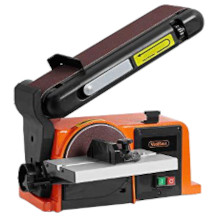
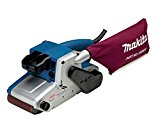
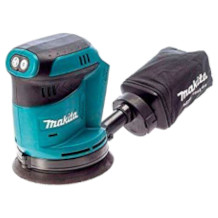
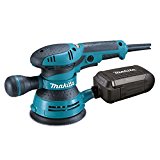
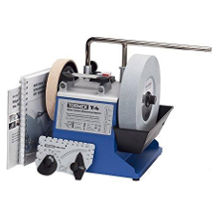
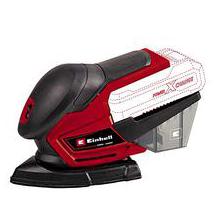
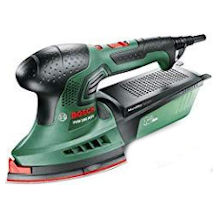
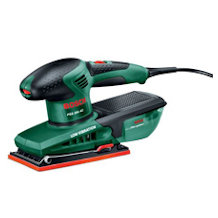
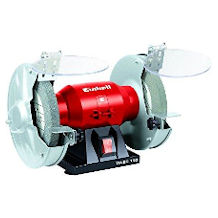
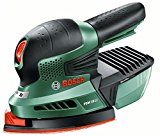




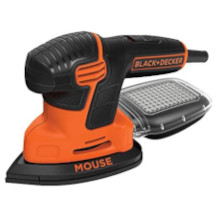

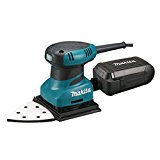
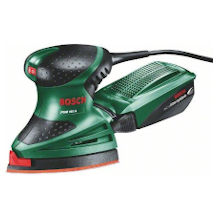
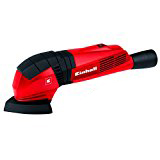


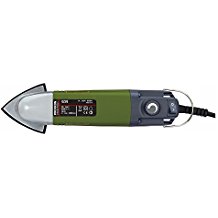
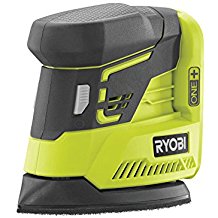

 2,021 reviews
2,021 reviews








